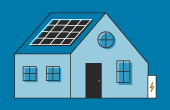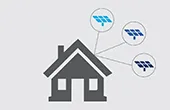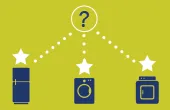So you know you want to finance your solar panel system, but one big question remains: should you lease your system from a company, or own your system and finance it with a solar loan? The answer here depends on a few factors, including your preferences, needs, and financial goals.
Continue readingShould you buy or lease your solar panels?
Whether you buy a system or lease it, going solar is one of the best ways to save on electricity bills. That said, the financing option you choose influences a number of factors, including the costs, maintenance responsibilities, terms, savings, and the return on investment (ROI) of your solar panel system.
Continue readingThe Green Jobs – Green New York Program
As clean energy policies and programs begin to stack up throughout the country, one major question remains relating to how states will use any revenues collected from policies like a carbon tax. Will they use the money to incentivize growth in renewable energy, to pay for retraining for employees of the fossil fuel industry, to redistribute as a credit to all taxpayers in the state, or for some other purpose altogether? The Green Jobs – Green New York program provides a great case study for a successful, long-lived program that effectively uses the revenue from a carbon tax to further the state’s economic growth and environmental actions.
Continue readingBring your own battery programs: what you need to know in 2021
As solar batteries become more and more popular, individual utilities are beginning to offer rebate and incentive programs to make the economics of adding storage to your solar panel system more favorable. Given that solar batteries are a new product, utilities have begun experimenting with new program designs specific to solar batteries. One of the newest, increasingly common program types is a bring your own battery, or bring your own device, program.
Continue readingWhat appliances use the most energy?
Not all appliances are made equal. Although every appliance in your home consumes energy, utilizing each one will have a different impact on your monthly electricity bill. Understanding which of your appliances use the most energy, as well as when they’re pulling power from the grid, can help you save substantially on your monthly utility bills.
Continue readingHow to compare community solar offers
So far, there are only a small number of community solar-friendly states that have markets we’d consider competitive. Consumer choice is still limited, and most shoppers have only one community solar program offering available to them, if any.
Continue readingRenewable energy examples: five alternatives to fossil fuels
Technologies like solar and wind power are becoming more common across the globe, and are both examples of renewable energy sources. There are several ways to generate power from renewable sources. These alternatives to fossil fuels will become an even more important part of our power generation mix in the years to come.
Continue readingThe Ford F-150 Lightning: what you need to know
For the past 39 years, the iconic Ford F-Series, which primarily includes the F-150, has been the best selling vehicle in the United States, selling just shy of a million vehicles in 2020. As automakers across the U.S. race to electrify their fleets, there’s been one major gap in announcements of new electric vehicles: what would happen with America’s best selling car? In May 2021, Ford put an end to that speculation, launching the new Ford F-150 Lightning.
While the Lightning won’t be the first electric pick-up truck in the U.S., it may be the most important one. It’s not only a stronger, faster version of the trusted F-150, but by being completely electric, the F-150 Lighting comes with additional features that could attract both new and former F-150 customers. In its first 48 hours of accepting reservations, Ford had almost 45,000 reservations; after a week, this number increased to 70,000. The truck officially goes on sale in 2022.
Continue readingAn overview of the “commence construction” clause
The country’s best solar incentive, the federal investment tax credit (ITC), is in the process of winding down. 2019 was the last year you could claim the full 30 percent tax credit. Starting in 2020, the credit dropped to 26 percent, and will drop to 22 percent in 2023 and disappear entirely for homeowners in 2024. This impending deadline has prospective solar shoppers rushing to take advantage of the maximum credit while they still can – but how can you make sure you’re eligible for the current 26 percent credit?
Continue readingEthical sourcing of solar components
The solar industry is very much a part of the global economy: its supply chain traverses countries, oceans and continents, sourcing raw materials from certain regions, manufacturing products in others, and, ultimately, sending solar products to home and business owners everywhere. With how interconnected the solar industry is, it’s important to be cognizant of where and how solar equipment is sourced. In lieu of recent credible reports of human rights abuses and forced labor in parts of China that feed into the solar supply chain, it’s worth looking at how to ensure that the solar equipment you purchase is ethically and sustainably sourced.
Before digging into this, a quick note: allegations of human rights abuses and other unethical practices are an atypical topic area for us. After all, we write about clean energy, not issues of geopolitical intrigue. But we don’t take these reports of human rights violations and forced labor lightly, and we want to make sure you’re aware of this ongoing investigation and have options to ensure your solar equipment is ethically produced.
Continue reading




